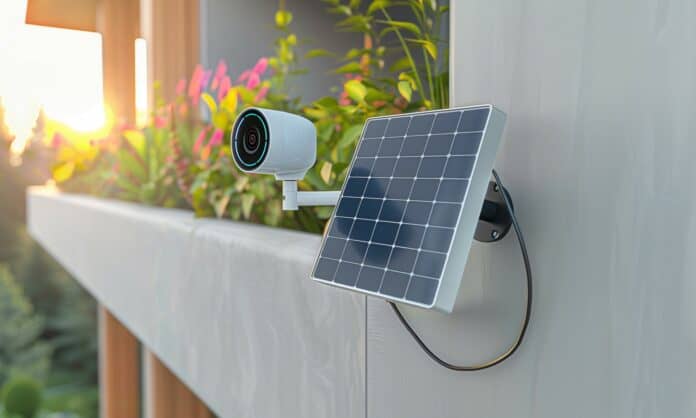Table of Contents
When discussing a camera system’s power consumption, understanding its energy needs is crucial for finding an appropriate power source and allowing efficient running. Whether you’re a CCTV installer or simply curious about your device’s energy draw, this post will uncover the wattage behind your favourite camera lens.
Understanding Power Consumption of CCTV Security Cameras
The power consumption of a regular point-and-shoot camera and CCTV security cameras will be vastly different – a camera only needed to capture photos will use much less power than a system of cameras operating continuously for security purposes.
CCTV systems often run 24/7 in various public and private settings. Understanding their power consumption is a financial consideration and crucial in ensuring surveillance systems are backed by the right kind of power supply. The wattage for these cameras can vary greatly depending on features such as night vision, motion sensors, and whether the camera is in use constantly or only activated by motion.
But first, you’ll need to understand the basics of wattage – what it is and how to find it. Wattage is a measure of electricity that a device consumes to function correctly. CCTV camera energy consumption will vary based on the factors mentioned above.
Another important electricity term to know is voltage, which is the “pressure” pushing the electricity from a power source to an electronic device.
With a firm grasp of terms like watts, volts, and amps (more on that later), you can use formulas to convert one to another and vice-versa.
How Many Watts Do Security Cameras Use?
Some security cameras will provide specifications for the device’s power consumption, making it easy to know how many watts it uses simply by reading the user manual. Other times, you may need to do some maths to calculate the actual wattage, using terms like amps and volts to find your answer.
Power over Ethernet (PoE) CCTV cameras require a lower power consumption wattage, with many models coming in around 12W. Conversely, other kinds of cameras, such as Digital Video Recorders (DVR), use more power, especially if they include 24/7 monitoring or work wirelessly. They can use anywhere from 40-60 watts.
Overall, security camera systems use less energy, making them somewhat affordable to run. If you want to reduce the wattage required of your security cameras, consider using reliable models, quality cables and wires, and tweaked settings to save power, such as turning on recording only when motion is detected.
Security system designers must wisely choose camera models and have a proper energy plan in place, including backup options in the event of power outages. Since security cameras have relatively low power requirements, you can get by with a small and portable EcoFlow RIVER 2 Series portable power station, such as the EcoFlow RIVER 2, which offers 300W of output – plenty of energy to power your camera system.
Calculating Security Camera Power Consumption
The two key factors you need when calculating security camera energy consumption are volts and amps. Given these two figures, the simplest formula to calculate the total power consumption of one security camera is:
Power (Watts) = Volts x Amps
If volts are 12 and each camera draws .25 amps, then you’d have
Watts = .25 amps x 12 v
Watts = 3 watts
That’s 3 watts of power consumed per camera.
Now, most security camera systems rely on multiple cameras – not just one. So, this three-wattage measurement isn’t giving us an accurate picture of how much energy the entire system of cameras requires.
To figure that out, you should multiply this wattage of 3W by the number of cameras in use.
Let’s say there are 16 cameras in use in your CCTV system.
That would be 3W x 16 cameras = 48W total
If you want to take it further to understand how many watts are used during a day’s worth of security monitoring, you can use the following formula:
Total Energy Consumption (kWh) = (Total camera system wattage x Operation Hours per Day) / 1,000
If your system monitors continuously 24 hours per day, you will get 1.152kWh
From this, you can deduce monthly or annual consumption by multiplying by the appropriate factor, considering the number of days in a month or year.
Frequently Asked Questions
The wattage of an 8-camera system would depend on the wattage of each camera. To find that, you’ll need to know the volts it uses and the amps it draws. The formula for one camera would be Watts = Volts x Amps. Then, you multiply this wattage by 8 to find your total power consumption for an 8-camera security system.
PoE camera systems generally use less power than DVR CCTV systems because they connect directly to a network with an ethernet cable. In contrast, DVR systems convert the footage into a digital format within the camera. Many PoE camera systems use as little as 10-12W.
Final Thoughts
Considering the significant consumption of multiple security cameras and the need for sustainable solutions, products like EcoFlow’s portable power stations are becoming increasingly relevant for personal and professional use. They offer a reliable, eco-friendly option to keep your CCTV cameras running when public power grids fail.
